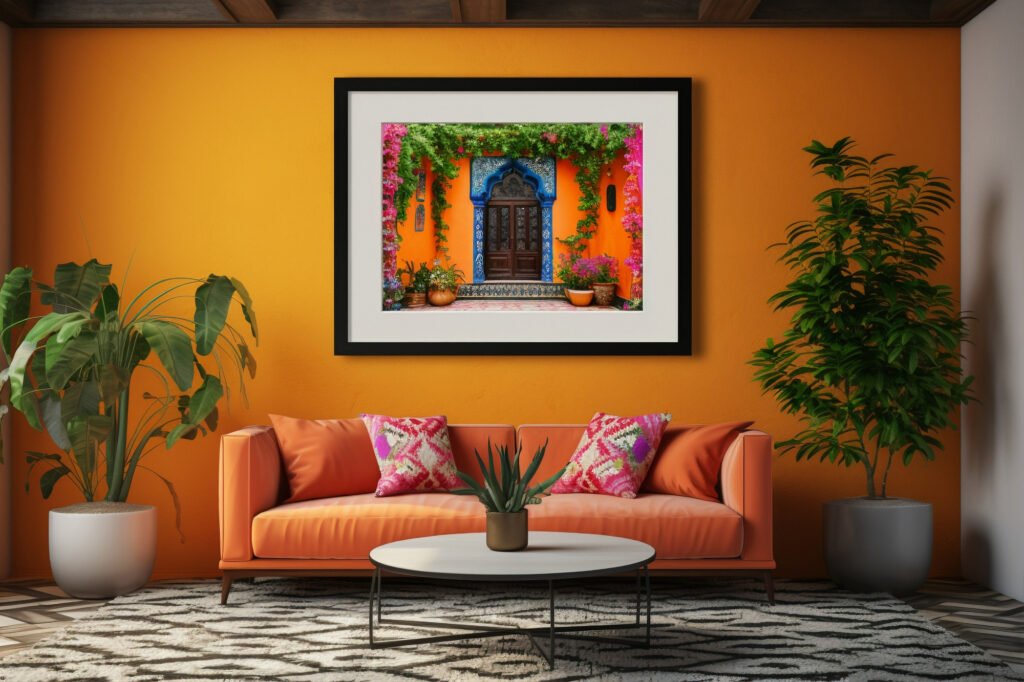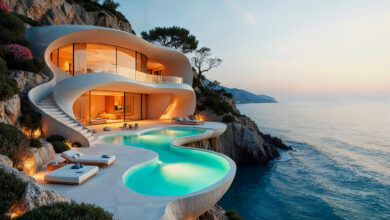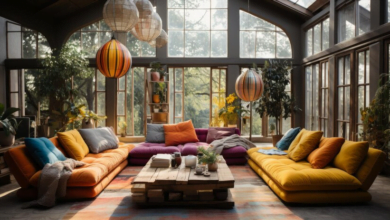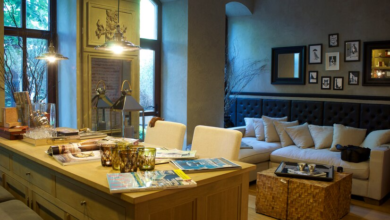How is Geometry Used in Interior Design: Discover 8 Ways

Interior designers make spaces look so well put together using a secret ingredient: geometry! The shapes, lines, and proportions we learn in math class play a much bigger role in design than you might think. Today, we’re going to dive into ‘how is geometry used in interior design?’ and discover how some math can transform a simple room into a work of art.
How is Geometry used in Interior Design?
So, how is geometry used in interior design? When we answer this question, we’re essentially shining a spotlight on the underlying principles that make spaces feel balanced and thoughtfully curated. From big things like furniture size to tiny details like tile placement, geometry gets it all arranged to please the eye.
1. Spatial planning
Geometry plays a crucial role in spatial planning, where designers figure out the best layout of rooms to maximize functionality and flow. By considering factors such as room dimensions, traffic patterns, and sightlines, they create spaces that feel open and comfy, while making the most efficient use of every single square footage.
2. Furniture
Furniture placement and selecting the right type of furniture for your interior isn’t possible without geometry. There’s a reason why certain chairs feel more comfortable than others and why some tables seem to fit perfectly in a room while others appear out of place. And that reason is geometry. Designers employ the principles of ergonomics and spatial geometry by using mathematical formulas to determine the ideal height, width, and depth of furniture pieces. This makes everything feel just right and in place!
3. Color Theory
Wondering how does an interior design use geometry here? Color schemes in interior design are often influenced by geometric principles. Architects and interior designers use color theory to create visually balanced compositions and pick colors that complement the geometry of the room. They might use contrast colors or pick a whole range of shades for harmonious color palettes to ensure the colors work with the room’s geometry making it balanced and beautiful.
4. Lighting Design
Interior designers use geometry to plan and implement lighting schemes effectively. They use shapes and angles to figure out the best places to put lights. Whether it’s about placing recessed lights in the ceiling or designing custom fixtures with geometric shapes, the calculations guide decisions to ensure a room has enough light and feels inviting no matter the time of the day.

5. Patterns
Patterns in a room can be super eye-catching all thanks to the use of geometry. How is geometry used in interior design forms? Geometric patterns are the muse for many interior design styles like Modern English design, Santa Fe-style homes, or Japandi-style spaces. From those zig-zag stripes on throw pillows to the cool, repeated shapes on the wallpaper, patterns rely heavily on mathematical precision in design to create attractive compositions. Imagine herringbone patterned tiles for living room flooring or a triangular patterned bedroom wallpaper where everything aligns perfectly. It’s all about finding the right balance between repetition, symmetry, and scale.
6. Texture and Material Selection
The use of different materials and textures, like patterned fabrics, textured wallpaper, or geometry-inspired tiles makes rooms feel so much richer and more interesting than dull ones. Designers give the walls and furniture more personality by using interior design geometry to add depth, dimension, and interest to every space.
7. Millwork and Built-Ins
Built-in fancy shelves and cabinets are not just pretty faces on the walls. They use elements of geometry to guide their design and fabrication and are tailored to fit specific spatial requirements. Whether it’s creating shelving units, intricate moldings, or bespoke cabinetry, there are numerous possibilities on how you can change the look of any room with a clever play of geometric shapes and create a lovely symphony for the eyes.
8. Geometry in the Details
In architecture and interior design, even the tiniest details matter. From cabinet knobs to faucets, designers pay great attention to detail in the selection and design of hardware and fixtures. For example, angular drawer pulls can complement a modern kitchen design, while ornate, geometrically designed door knobs add a hint of elegance to a traditional interior. Sometimes introducing geometry in home décor can simply involve small accents. This showcases how does an interior design use geometry to create cohesive spaces, where these minute details are enough to echo shapes in a large space.
Final Words
How is geometry used in interior design? Now that you have all the answers to this frequently asked question above, you’re ready to craft your favorite spaces using geometry. Just remember geometry isn’t just about what meets the eye; it also influences how we experience and navigate a space. Using geometrical principles like scale, proportion, and perspective in fixtures, furniture, and décor, you can simply create rooms that feel larger, cozier, or more dynamic than they actually are.
Source: Decorpot



